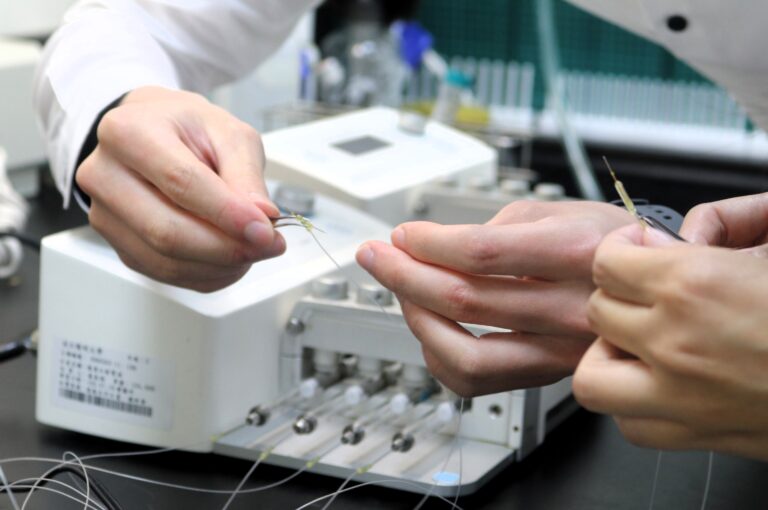RESEARCH HIGHLIGHTS
379
NYCU
Number of Academic Papers
Published by Students or Exhibition
Activities Organized by Students
- Update Date:2023-09-18
- Units:Office of International Promotion and Outreach
The fetus contracting COVID-19 has a safe solution: ITM Confirm “Molnupiravir” Can Penetrate the Placenta to Achieve Effective Therapeutic Concentrations

ITM Confirm “Molnupiravir” Can Penetrate the Placenta to Achieve Effective Therapeutic Concentrations
Translated by Yi Yun Huang
Molnupiravir is a drug authorized for emergency use by the U.S. Food and Drug Administration to treat COVID-19, but many aspects of its mechanism are still unclear. Professor Tung-Hu Tsai from the Institute of Traditional Medicine (ITM) at National Yang Ming Chiao Tung University (NYCU) has confirmed through pharmacokinetics that Molnupiravir and its active metabolite, NHC, can penetrate the placental barrier to reach the fetus and achieve effective virus inhibition concentrations. This research was published in the scientific journal ‘eBioMedicine,’ which is part of the Lancet series.
During the COVID-19 pandemic, there has been a lack of information on medication research. According to the interim guidelines for clinical management of novel coronavirus infections by the Ministry of Health and Welfare, prescribing physicians should only consider using Molnupiravir for pregnant women if the benefits outweigh the risks and must thoroughly inform pregnant women about the risks of using the medication during pregnancy. Even with this risk assessment, it remains entirely unknown whether the treatment reaches a therapeutic concentration for the fetus.
This research is part of the epidemic prevention scientific research center project led by Vice President Muh-Hwa Yang and was carried out in collaboration with the University of Cambridge in the UK.
During the COVID-19 pandemic, there has been a lack of information on medication research. According to the interim guidelines for clinical management of novel coronavirus infections by the Ministry of Health and Welfare, prescribing physicians should only consider using Molnupiravir for pregnant women if the benefits outweigh the risks and must thoroughly inform pregnant women about the risks of using the medication during pregnancy. Even with this risk assessment, it remains entirely unknown whether the treatment reaches a therapeutic concentration for the fetus.
This research is part of the epidemic prevention scientific research center project led by Vice President Muh-Hwa Yang and was carried out in collaboration with the University of Cambridge in the UK.
Professor Tung-Hu Tsai leads the research team, which used self-developed microdialysis probes to collect samples from the blood, placenta, amniotic fluid, and fetuses of pregnant mice. The concentrations of Molnupiravir and its active metabolites were analyzed using Liquid Chromatography with tandem mass spectrometry (LC-MS/MS). The research found that approximately 29% of the effective metabolite in the mother’s bloodstream reaches the fetus, 19% reaches the amniotic fluid, and 9% reaches the placenta. Furthermore, when combined with past in vitro research literature, it was discovered that the overall concentration of effective metabolites entering the fetus through placental tissue after administration is approximately only one-third of the concentration in the mother’s blood.
Professor Tung-Hu Tsai stated that the concentrations of the drug in the blood, placenta, fetus, and amniotic fluid of pregnant mice were all higher than the effective therapeutic concentrations, confirming it as an effective treatment regimen. The dosage administered achieves effective treatment concentration ranges in both the pregnant mother and the fetus. This scientific discovery holds important reference value for the use of medication by pregnant women infected with the COVID-19 virus and whether it can effectively treat infections in the unborn fetus.
Professor Tung-Hu Tsai stated that the concentrations of the drug in the blood, placenta, fetus, and amniotic fluid of pregnant mice were all higher than the effective therapeutic concentrations, confirming it as an effective treatment regimen. The dosage administered achieves effective treatment concentration ranges in both the pregnant mother and the fetus. This scientific discovery holds important reference value for the use of medication by pregnant women infected with the COVID-19 virus and whether it can effectively treat infections in the unborn fetus.












